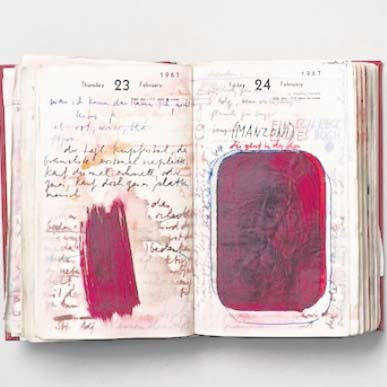Dieter Roth Diaries, The Fruitmarket Gallery, Edinburgh

To display the archival material collected by 20th century German artist Dieter Roth throughout his life, the Fruitmarket has transformed its upper floor into what appears to be the obsessively ordered library of an anally retentive architect.
Everything is filed, dated and shelved. The few things on display are, at first glance, small in scale.
Roth, who died in 1998 and left a body of work that ranges from sculptures and installations to films and books, was a compulsive diarist and detritus collector. He was constantly self-referential and an early incorporator of found objects into his collages and montages. This, for the first time, is the material in the raw.
In 1975, to make Flat Waste, he collected every piece of garbage that could be flattened into a ring binder. The original box files, labelled with the date and location, fill half of the floor space. Three folders are out for in-depth noseying: here is his Marlboro packet, the top of a beer bottle, a boarding card. The smell of tobacco smoke still lingers. It is part journal, part evidence from a murder scene, a year of a life in five chunky shelf units.
Roth’s copy books – scrap books made from his ongoing collections of drawings, photographs and stuff – were printed in small runs, for sale or as gifts for friends. Self-portraits dominate and a series of double-sided ones are cleverly displayed.
Some are heavily smudged and over-scrubbed, some so delicate they could be fragile tracings.
Other copy books display a less serious side: family snaps, defaced photo- booth pictures, wild freeform doodles. His actual diaries are tiny and methodical, with only the odd tiny image among to-do lists and appointments.
Roth recorded his final year in video format. Flickering on a wall of 128 monitors, this is not the florid confessional of the Big Brother house but an old man in his studio, reading in bed, washing the dishes, speaking on the phone.
A show that at first appears underwhelming turns out to be intimate and moving. In itself, it’s beautifully achieved. It’s just a shame that the body of Roth’s work is not better known, to put this revelatory private material in the context of his public output.
To 14 October (O131 225 2383)
Join our commenting forum
Join thought-provoking conversations, follow other Independent readers and see their replies
Comments
Bookmark popover
Removed from bookmarks